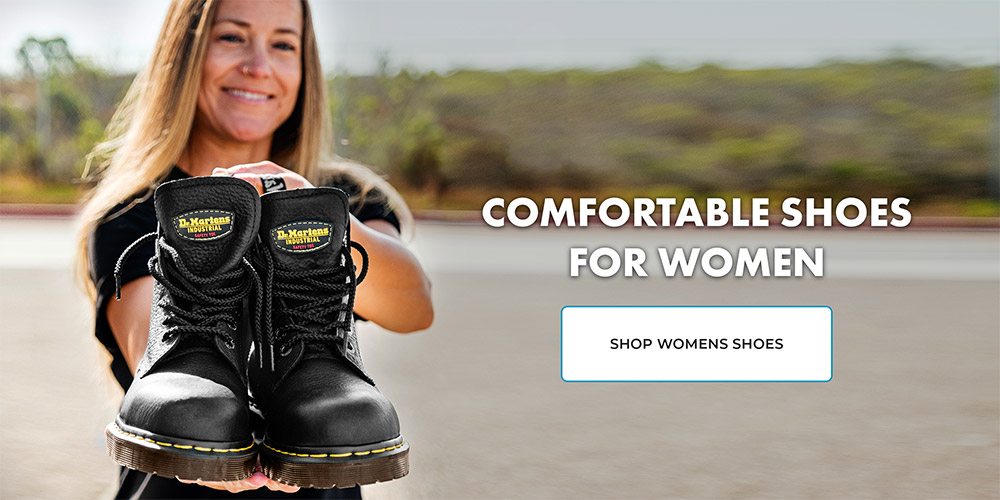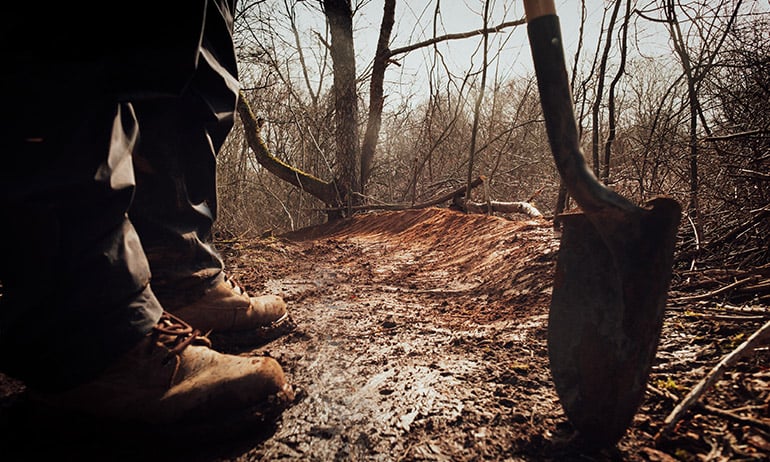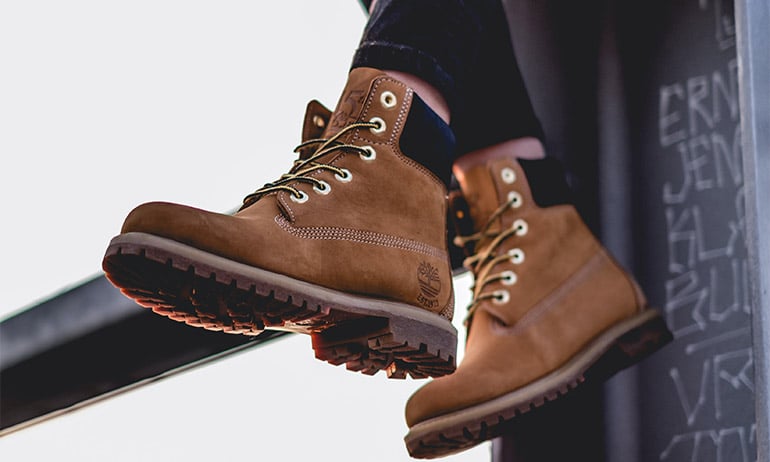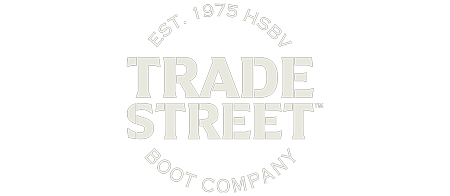Jun 22, 2021 / Safety Toe Footwear, Slip Resistant Footwear
5 Things to Consider When Buying Winter Work Boots
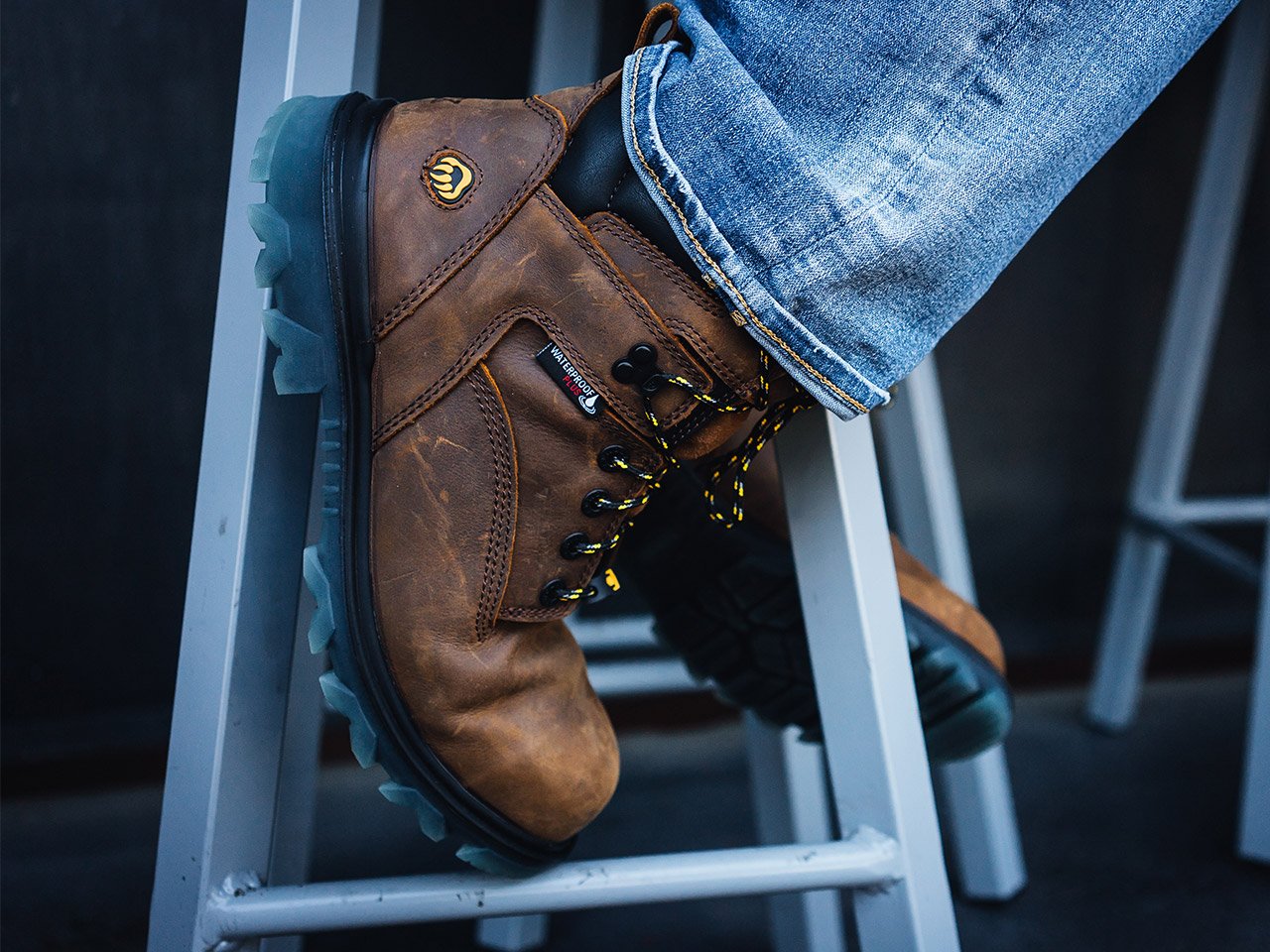
Truck wheels, cement blocks, nails-these are just a few of the safety hazards you might already find at work. Add wintertime to that mix, and you’ve got a whole new set of worries. Between slipping on ice and frostbite from deep snow, seasonal hazards mean paying extra attention to OSHA’s footwear guidelines. To keep your feet at optimal warmth and safety in the chill, read on for a few essential guidelines to buying the best winter work boots.
#1 Customized Foot Protection
Why do doctors wear rubber slip-ons and not loafers? Or snorkelers wear flippers and not flip-flops? Because their jobs require those specific foot protections.
When buying a work boot, you need a pair that protects against your specific work environment. Whether it's deciding the correct safety toe boot or choosing a waterproof boot with insulation for guarding your feet from deep snow here are a few ways to keep feet injury-free while at work in the winter:
Toe Design
Did you know foot and toe injuries account for 8.5% of workplace injuries? Toes are particularly vulnerable to crushing injuries since they’re more exposed. But with the right toe protection, you can keep your feet protected from winter (and workplace) hazards.
Depending on your job, you may need one of these safety toe toe guards for your work boots:
- Composite Toe Work Boots - Made from plastic, carbon fiber, or other non-metals, men's and women's composite toe work boots are an affordable option. The inefficiency of a composite material transferring temperature. also makes them one of the best cold weather work boots.
- Steel Toe Work Boots - Steel Toe boots provide incredible protection due to their internal toe box. These are essential for preventing injuries due to slips and falls, cuts/lacerations and burns, and punctures. However, a steel toe boot is quite conducive to heat and cold (more than composite toe boots), which is something to consider when thinking about warmth and insulation options.
- Metal Alloys - Lightweight metals (think aluminum and titanium) will keep you up and running with protection similar to steel toe boots. On the flip side, they aren't great for warmth, and they come at a higher price.
Quick Tip: If you want more protection and to keep your feet warm, consider pairing your boots with insulated socks - wool is an excellent material for this.
Other Protections
Sure, toes are important. But don’t forget the other parts of your feet. From the bottom to the top, you need to consider all possible points of attack on your work boot.
A few other areas of insulated work boot protection to consider for the winter:
- Metatarsal Guards - Handling heavy items like packages or concrete in the cold? Then you ought to consider a metatarsal work boot. Internal or external, a met guard for winter construction boots will keep the tops of your feet protected.
- Electric Currents - For those working near electricity sources, boots that ground electric currents are a must. Look for a passing Electrical Hazard (EH) rating from the American Society of Testing & Materials.
- Puncture Resistance - Like toe boot guards, puncture-proof midsoles come in non-metal and metal varieties. Steel midsoles are a highly protective and affordable option, while woven fabric midsoles are more flexible and cold-resistant.
#2 A Boot’s Lifespan
Five years of work doesn’t have to mean buying five pairs of work boots. With the right materials and care, your winter work boots can stay pristine for years to come.
To last against cold weather conditions, the material is king. Otherwise, any old boot would hold up to the snow and ice. Here’s a breakdown of durable boot materials that brave the winter:
Winter-Friendly Boot Materials
So what are the best boot materials for winter? They include but are not limited to:
- Rubber boots/ rubber sole Nylon
- GORE-TEX (or similar waterproof membranes)
- Water-Resistant Leather
While leather boots are a popular option for durability, they are not 100% waterproof. Any ground salt or excess water could damage them. Make sure to properly treat your boots with oil and snoSeal to protect against salts. However, if you already have damaged leather boots, check out how to restore leather boots. Make sure your job has minimum contact with those elements if buying full-leather work boots to avoid early wear.
Longevity Tips
As you already know, your boots won’t do all the work for you. If you want to keep your work boots in tip-top shape, you have to learn proper boot care.
For the wintertime, a boot care routine is essential. Some pointers to help you establish one:
- Cleaning - Don’t wait until your boots start to smell. A monthly or even weekly cleaning will keep your boots from wearing down. For non-leather interiors, a damp cloth and gentle shampoo will work, while leather requires specific cleaning solutions.
- Use Conditioner/Treatments - Conditioning oils aren’t just for leather. A proper conditioning solution once or twice a month will keep your winter boots pliable and in good shape.
- Have a Rotation - If you’re hitting the slush every single day, you might need some backup. Having a few boots on rotation can keep you from prematurely pushing a single pair through wear and tear. Plus, if you have different working environments, consider having a few different kinds of winter work boots. Perhaps snow boots for when you need to be outside, and 3m thinsulate when you need warmth but maybe not as much protection against the elements.
#3 Weatherproofing Qualities
In wintertime, your work boots need enhanced technologies to hold up against the elements. Keep these weather factors in mind when looking for snow work boots.
Insulation
Frostbite should not be taken lightly. When working in the cold, you need shoes with proper insulation to keep you warm and safe. Here are the types of insulation to consider for warmth in winter boots:
- Natural - Any animal-based interior lining (wool, shearling) is considered natural insulation. While cozy and soft, they are not best for when you need a waterproof boot or when in very harsh winter environments.
- Synthetic - Thinsulate and Primaloft are two popular synthetic fiber insulations in work boots. With higher airflow and greater water protection, these are perfect for more extreme winter conditions.
- Blend - Usually in the form of polyester and wool, blended insulators combine the above two. While more durable than natural insulation, they’re still not quite as sturdy as most synthetics.
Water Resistance
Not every winter work boot needs to be fully waterproof. But if you’re sloshing around in the snow at work, you don’t want to feel icy water on your toes.
Step one is finding a durable, water-resistant material, as mentioned above (think rubber outsole, GORE-TEX or similar product). Follow that with applying a waterproofing spray or wax to the exterior of your boots. This will block out cold slush on a molecular level.
Got boots that are fully waterproof, but they just don’t reach high enough? Protect your calves with removable nylon or synthetic gaiters.
#4 Traction - All Grip, No Slip
“Cold” and “wet’ are two words for winter weather conditions. But “slippery” should also be included in this category.
The best winter work boots will keep you from sliding into injuries. Here are a few traction styles to consider for your shoes:
- Rubber sole - A classic no-slip aid, rubber can face your average winter terrain. Look for outsoles with some ridging to provide extra traction.
- Spikes - An excellent choice for rugged terrain and ice in the wintertime. Lightweight spikes will give your winter work boots the grip they need without weighing you down.
- Add Ons - Love your boots, but they’re just a bit too slippery? Traction add ons can provide the grip your snow work boots need. You can choose from pull-over (full shoe), mid-sole (a loop around your arch), or heel-only traction devices.
For extra assurance, check out certain varieties that rate high on the new traction Snowflake Scale from the Toronto Rehabilitation Institute.
#5 Fit & Comfort
You could have the most safe, sturdy, tricked-out winter work boots in the world. But if they don’t feel comfortable... what’s the point?
Make sure your winter work boots will help your productivity, comfort, and safety. By adding foot support and properly breaking in your new boots, you’ll save months of foot pain.
Insoles and Support
Fit is critical to help keep your feet warm. Everyone’s feet are a bit unique, just like their fingerprints. Considerations like sufficient toe room is so important for maximizing your boot experience, and will be different for each person depending on their specific foot. However, all feet need some form of arch support in their shoes. And for work boots, arch support can be hard to come by.
If you want to reinforce functional feet and proper body alignment, consider supportive insoles. There are a few types with different benefits:
- Gel Inserts - Less structural support, but great shock impact for hard surfaces
- Foam Inserts - High comfort with medium support, excellent for plantar fasciitis
- Cork Inserts - Absorbs shock easily, but its rigidity requires some breaking in
- Wool Inserts - Comfy and maintain warmth, but less structural support
Break-In Process
Most shoes are ready-to-wear the minute you leave the store. But with work boots, you need some proper breaking in to create flexibility and ease of use.
You may have heard about stretching shoes with ice or using hot water to loosen soles. These methods may actually damage or ruin your boots.
Instead, stick to these breaking in tips:
- Think Ahead - Buying boots the day before your job starts? Big no-no. With safety work boots, give yourself a few weeks ahead of time to wear your shoes around the house. By the time you step into your workplace, your boots should feel like putting on a glove.
- Pay Attention to Fit - This is not the time to ignore a slight pinch in the toes. That extra bit of “wiggle room” will end up creating blisters or discomfort. The best winter work boots will cause no pain, tightness, or loose spots when on your feet.
- Use Conditioner and Oil - If you bought a pair of work boots that feel dry, consider picking up some boot oil or conditioner. Rubbing the treatment along the uppers will help loosen up the material (thus, it’ll start stretching).
Boots Tough Enough to Weather Any Storm
When it comes to choosing winter work boots, your two best friends are technology and diligence. These boots have to be tailored to your specific needs, then to your preferences and foot architecture. If you are wondering when to replace your work boots, or signs you have worn out work boots, Boot World is here to help.
Invest in high-quality boots, and you will save yourself time, money, and the hassle of slippery work boots on the job. To that end, here at Boot World, we have excellent cold weather work boots for men and women alike.
Check out our catalog of work boots from brands like CAT Footwear and Timberland PRO to keep your feet warm and protected throughout this beautiful-but hazardous-season.
Sources:
- Occupational Health & Safety. A Guide to Safety Footwear Regulations.
https://ohsonline.com/articles/2018/04/01/a-guide-to-safety-footwear-regulations.aspx - Boot World. What is the Difference Between Safety Toe and Steel Toe?
https://www.bootworld.com/post/the-difference-between-safety-toe-and-steel-toe-boot-world - Big Sky Fishing. Winter Boot Insulation.
https://www.bigskyfishing.com/snow-boots/winter-boot-insulation.php - Boot Mood Foot. What are the Best Insoles for Work Boots in 2020?
https://bootmoodfoot.com/best-insoles-for-work-boots/ - Boot World. How to Break In Your New Work Boots.
https://www.bootworld.com/post/how-to-break-in-your-new-work-boots
Reviewed By:
Ed Stone brings over 45 years of footwear knowledge and passion to his role as President of Boot World, a family-owned company and an industry leader in safety and occupational footwear. A second generation "shoe dog” Ed's footwear knowledge is unparalleled, serving as an informal advisor for some of the worlds largest footwear brands including Wolverine, Timberland PRO, and Reebok Works.
A lifelong Southern California resident, and ardent conservationist, Ed enjoys hiking and open water swimming.
